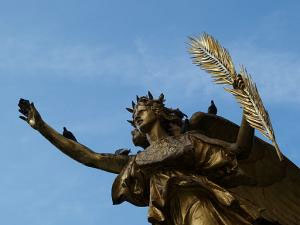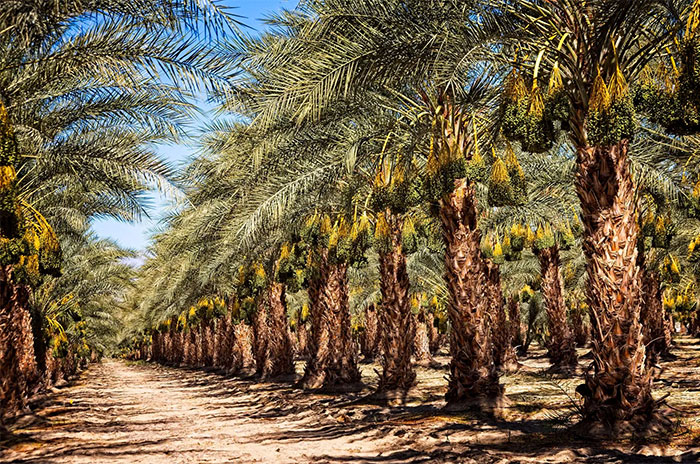Palm Tree Symbolism Facts & Meaning: Zodiac, Superstitions, Dreams, and Myths
I
Palm Tree Facts

The Palm Tree is famous for a lot of reasons – it is widely cultivated around the world, a significant symbol in the bible, and believed to be one of the oldest plants on earth.
The Palm Tree has more than 2,500 species and can be found almost everywhere such as tropical regions, rainforests, and deserts. They are named because of their leaves resembling the outstretched fingers of the human hand.

II
Palm Tree Uses
Admittedly, the Palm Tree is one of the most beneficial plants in the world. If you must live in an island full of Palm Trees, you will surely survive because it can sustain all your needs.
One-third of the total plant oil produced globally is from the Palm Tree. Palm oil has many uses such as for cooking, beauty products, and medicine. Refined oil from the Palm Tree is a healthy option for cooking because it contains Vitamin A and it can lower cholesterol. For skin care, Palm Tree oil is hydrating and it contains antioxidants helpful in anti-aging. Antioxidants in Palm oil have been found to help reduce heart diseases, regulate weight, and treat malaria.
In construction, the trunk of the Palm Tree is a good material for walls and roofs. It is also used by interior designers to make a room feel like you are in the beach. The leaves and fibers of the Palm Tree are used to make baskets, fabric, rugs, and other decorations.

III
Palm Tree History
Based on fossilized Palm Trees, the oldest determinable origin of this plant is during the Campanian stage or around 83 million years ago. The fossils were found in Egypt, Transylvania, Provence, and Greenland.
Palm Trees were originally giant grasses or megaflora. Due to the movement of land mass, Palm Trees were also distributed all around the world. There are species of the Palm Tree in America, India, North Africa, Southeast Asia, and Australia.
Several artifacts show the cultivation of the Palm Tree in Mesopotamia during the 14th century BCE. Mesopotamia covers modern-day Iraq, Syria, and Turkey. Date Palm Trees are staple food in the area and monuments were built to illustrate methods of pollination and cultivation.
IV
Palm Tree Positive Symbolism

In the bible, the Palm Tree is a symbol of victory and peace. When Jesus went to Jerusalem, he was welcomed by the people holding and waving palms while calling him “hosanna” or “savior.”
Because Jesus sacrificed himself to save the people from their sins, the Palm Tree is portrayed as a reminder of the victory of Jesus over death. Every year, this event is celebrated as Palm Sunday and it also is the beginning of the Holy Week.
The Palm Tree is also a symbol of nobility and righteousness based on Psalm 92:12. In this verse, a righteous man is likened to a Palm Tree that flourishes with its leaves spread out and pointing to heaven.
Accordingly, the Palm Tree reflects a person who does not break his principles and does not bow down in contrary of the right way. Therefore, it is a prominent decoration in temples and sacred places. Temples are regarded as the house of God, and in several verses in 1 Kings 6:29-35 and Ezekiel 40:16, Palm Trees were carved in temples.
V
Palm Tree Negative Symbolism

Since the Palm Tree is a symbol of rigtheousness, it also serves as a warning to keep away from hypes appearing everywhere. This is because people are easily swayed by what they see and hear, whether it may be good or bad.
The people who waved the Palm leaves were the same people who condemned Jesus to death. This is believed to be a spiritual message never to forget.
VI
Palm Tree Cultural Symbolism
For the people of ancient Egypt who lived in Mesopotamia, the Palm Tree symbolized fertility and abundance. Every spring, the Sumerians celebrated the sacred marriage of the Mesopotamian goddess of fertility, represented by a high priestess, and the god Dumuzi. This marriage represents the harvesting and storage of dates or the fruit of the Palm Tree. Dates are staple food for the Sumerians.
The importance of the Palm Tree was highlighted in the Code of Hammurabi where it punishes the cutting and neglect of Palm Trees. Aside from this, the Palm Tree also symbolized immortality especially if grown beside a stream. Palm Trees can live more than a century and Assyrians associate this to long life.
Palm Trees were also a symbol of victory and success for the Romans. Romans are known to hold athletic competitions. Instead of trophies, branches of the Palm Tree were used as awards to those who won in contests. When Vespasian, emperor of Rome, conquered the Jews in sometime before 70 A.D., a Palm Tree was engraved on the back of a Roman coin to symbolize the victory of the Romans over the Jewish people.
VII
Palm Tree Zodiac Sign
The Palm Tree is associated with the sun for its branches and leaves resemble the radiant rays of the sun. The Palm Tree has both masculine and feminine energy.
It is linked to the masculine energy because it resembles an erect phallus. However, fruits nestled in the branches and leaves of the Palm Tree symbolize fertility of the feminine energy. The Palm Tree, as a sun symbol, means honor, truth, vitality, aspiration, and fertility.
In zodiac, the Palm Tree is associated with the Leo sign. The sun is the ruling planet of Leo and the Palm Tree is compatible with the fiery nature of Leo.
VIII
Palm Tree in Dreams
Palm Trees are a sure sign of blessings when appearing in dreams. It is also a sign of rising up against difficult challenges in life, like a sun rising up after a night of darkness.
IX
Palm Tree Omens and Superstitions
Churches and places of worship are usually decorated with branches of the Palm Tree during important events. As indicated in the bible, the Palm Tree is a symbol of victory, peace, and righteousness which are important in religious ceremonies. Blest branches of the Palm Trees during Palm Sunday are brought home and placed in the entrance of houses to call on victory, peace, and righteousness to the house.
In some cultures, in the Middle East, the Palm Tree is a symbol of rest. The Palm Tree growing around an oasis means that water is a gift from Allah. As such, interior designers incorporate Palm Trees in hotels and houses to call on peace, rest and tranquility.
X
Palm Tree Mythology and Folklore
In Greek mythology, the Palm Tree relates to Apollo. Apollo was born between an olive tree and Date Palm Tree in the island of Delos. As a son of Zeus, he is recognized as the god of archery, music, healing, prophecy, and many more.
Nike, the goddess of victory, is also associated with the Palm Tree. In some depictions, she is seen with branches of the Palm Tree. This is the reason why Palm Trees symbolize victory in Greece and Rome.


